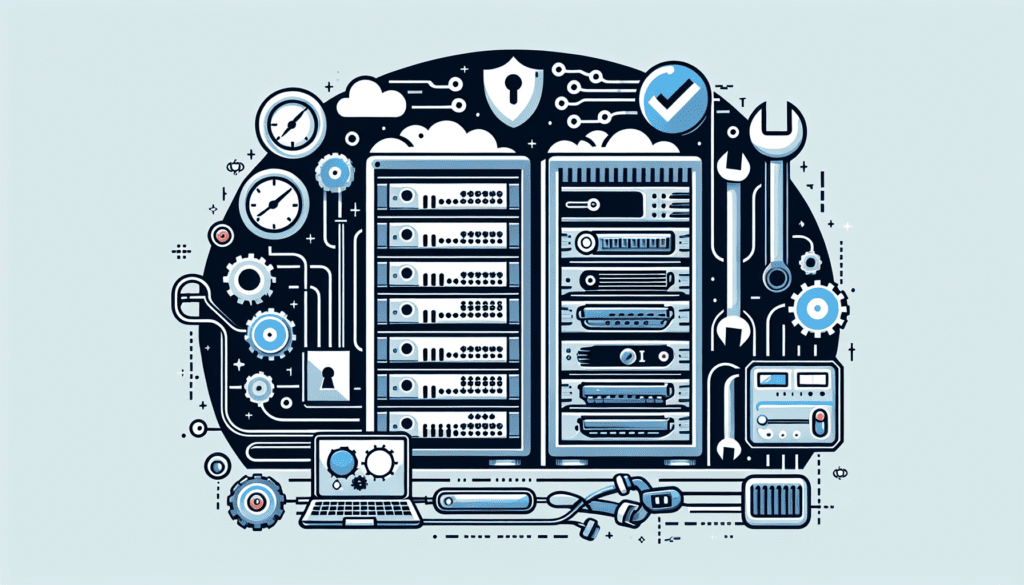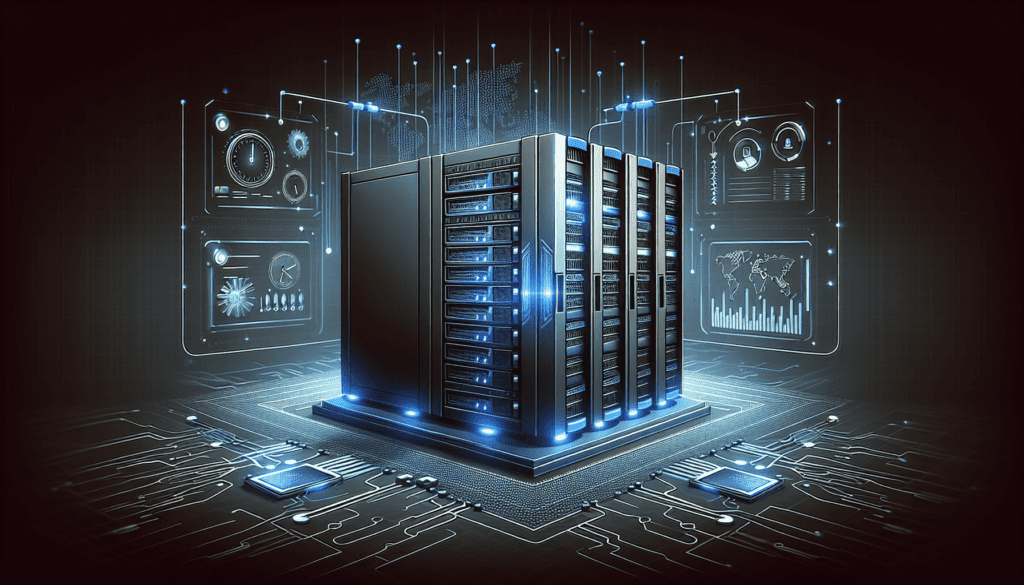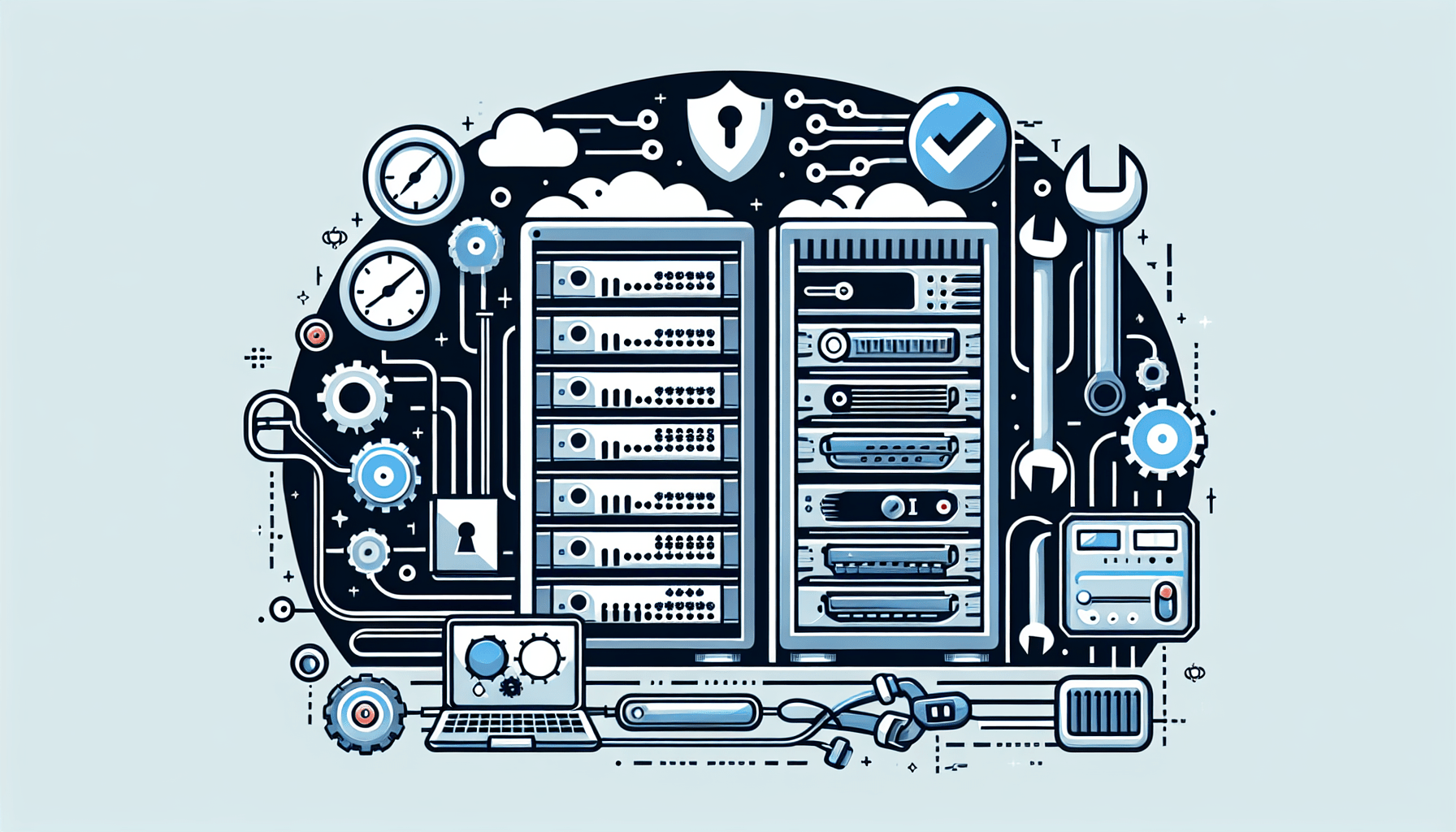In this article, you will discover the essential steps to configuring and managing a dedicated server. Whether you are new to the world of server management or simply looking to enhance your skills, we’ve got you covered. From understanding the importance of a dedicated server to mastering the process of configuring it to your specific needs, you’ll learn all the tips and tricks necessary for efficient server management. So, get ready to take your server game to the next level and ensure seamless performance for your website or application.

Choosing a Dedicated Server Hosting Provider
When it comes to choosing a dedicated server hosting provider, conducting thorough research and comparing different options is essential. Look for providers that offer reliable and high-performance servers, as well as excellent customer support. Consider factors such as server uptime guarantees, data center locations, and pricing plans. Reading reviews and testimonials from other customers can also provide valuable insights into the quality of the service offered by the hosting provider. By investing time in researching and comparing different hosting providers, you can make an informed decision and select the best option for your needs.
Evaluating Server Specifications and Pricing
When evaluating server specifications, consider factors such as CPU power, RAM, storage capacity, and network connectivity. Determine the server specifications required to support your specific application or website’s needs. Additionally, consider the pricing of the different server options available. Check whether the hosting provider offers various pricing plans that can cater to your budget. Keep in mind that while price is important, it should not be the only factor influencing your decision. The server specifications should align with your requirements to ensure optimal performance and scalability.
Considering Scalability and Future Growth
Scalability is a crucial aspect to consider when choosing a dedicated server hosting provider. You should assess whether the hosting provider offers the flexibility to easily upgrade server resources as your needs grow. This allows you to accommodate increased traffic without experiencing any downtime. Consider the provider’s offerings in terms of additional storage, bandwidth, and CPU capacity. Furthermore, think about your future growth plans. Ensure that the hosting provider can support your long-term needs, as changing providers can be time-consuming and disruptive.
Purchasing and Setting Up a Dedicated Server
Once you have chosen a dedicated server hosting provider, the next step is purchasing and setting up the server. Select the appropriate hardware based on your requirements. This includes considering the number of CPU cores, amount of RAM, and type of storage (SSD or HDD). After selecting the hardware, order and provision the server through the hosting provider’s website or contact their sales team directly. During this process, you may need to provide specific details such as the desired operating system and server location.
Deciding on the Operating System
Choosing the operating system for your dedicated server is an important decision. Common options include Linux distributions (such as Ubuntu, CentOS, or Debian) and Microsoft Windows Server. Consider the specific requirements of your applications or services and their compatibility with different operating systems. Additionally, assess your familiarity and expertise with each operating system. Selecting the right operating system ensures that your server runs efficiently and securely.
Configuring Basic Server Settings
After provisioning the server, it’s crucial to configure the basic settings to optimize its performance and security. This includes setting up the server’s hostname, network settings, and time zone. Ensure that the server’s firewall is enabled and properly configured to restrict unauthorized access. Additionally, install essential software packages such as an SSH server and a file transfer protocol (FTP) server for remote server management.

Securing Your Dedicated Server
Securing your dedicated server is of utmost importance to protect your data and prevent unauthorized access. Start by creating strong and unique passwords for your server and all user accounts. Avoid common or easily guessable passwords to minimize the risk of a security breach. Implement a robust firewall to filter network traffic and block malicious connections. Regularly update and patch software to patch any vulnerabilities and protect against potential cyber threats. Enabling intrusion detection and prevention systems can also provide an added layer of security.
Installing and Managing Server Software
Installing the necessary server software packages is essential for the smooth functioning of your dedicated server. This includes configuring a web server, such as Apache or Nginx, to host your website or application. Set up a database server, such as MySQL or PostgreSQL, to store and manage your data efficiently. Additionally, install and manage email server software to enable email communication. Properly configuring and managing these software components ensures optimal performance and functionality.
Monitoring and Performance Optimization
Setting up server monitoring tools allows you to keep track of resource usage and performance. These tools provide valuable insights into CPU usage, memory utilization, disk I/O, and network traffic. Monitor these metrics regularly to identify any performance bottlenecks or areas for improvement. Additionally, optimize server configurations for better performance by fine-tuning parameters such as caching mechanisms and request handling. Troubleshoot any performance issues promptly to maintain a smooth user experience.
Backup and Disaster Recovery
Implementing regular backup strategies is crucial to ensure the safety and availability of your data. Create automated backup processes to minimize the risk of data loss. Regularly test the restoration of backup data to ensure its integrity and reliability. Establish a disaster recovery plan that outlines the steps to be taken in the event of a critical server failure or data breach. By proactively implementing backup and disaster recovery measures, you can mitigate the impact of potential disruptions.
User Account and Access Management
Creating and managing user accounts on your dedicated server is important for controlling access and maintaining security. Assign appropriate access permissions to each user based on their role and responsibilities. Implement two-factor authentication to add an extra layer of security to user logins. This helps protect against unauthorized access even if passwords are compromised. Additionally, enabling audit logs provides a record of user activity, aiding in identifying any security breaches or suspicious behavior.
Managing Server Updates and Upgrades
Regularly updating the operating system and server software is crucial for maintaining optimal performance and security. Stay up to date with the latest security patches and bug fixes by regularly applying updates. Manage hardware upgrades or replacements as needed, especially in cases where the server’s capacity no longer meets your requirements. Take precautions to prevent potential issues during updates, such as taking backups and testing updates on a non-production environment.
Troubleshooting Common Server Issues
Server issues can arise from various sources, including network connectivity problems, hardware malfunctions, software errors, or misconfigurations. Develop troubleshooting skills to effectively identify and resolve these issues. Diagnose network connectivity problems by checking cables, routers, and network configurations. Use diagnostic tools to identify server hardware issues, such as faulty RAM or overheating components. Troubleshoot software and configuration errors by analyzing log files and reviewing system configurations. Proactive troubleshooting minimizes potential downtimes and ensures the smooth operation of your dedicated server.
24/7 Server Monitoring and Support
Opting for managed server hosting services can alleviate some of the responsibilities associated with server management. Managed hosting providers offer 24/7 server monitoring and support, ensuring the availability and performance of your dedicated server. They can proactively identify and troubleshoot issues, maximizing server uptime. Managed hosting also includes access to customer support channels that can assist with urgent issues and emergencies promptly. Utilize these support resources effectively to minimize disruptions and maintain optimal server performance.






